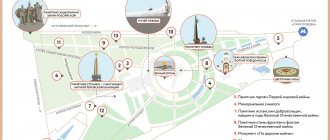Most of the inhabitants of the Earth are religious, practicing one form of religion or another.
The largest (by number of followers) religion in the world is Christianity; Throughout the 20th century, the share of Christians in the total population of the Earth practically did not change, remaining equal to 33%. The second world religion is Islam (23% of the world's population). The number of non-believers and atheists is highly controversial and is estimated by various studies at 11-16% of the planet's population. A significant proportion of the world's population are Hindus (14-15%), Buddhists (7%) and supporters of traditional beliefs.
Content
- 1 Followers of religions in 2010
- 2 Main religions 2.1 Christianity
- 2.2 Islam
- 2.3 Hinduism
- 2.4 Buddhism
- 2.5 Judaism
- 2.6 Other religions
- 2.7 Non-religious
- 5.1 Competition between Christianity and Islam
Islam in Europe
As you can see, Christian Europe is gradually losing ground and is going through a period when Islam is actively penetrating its everyday life and influencing politics. Tolerance and an ill-conceived migration strategy lead to a deterioration in interfaith relations in the region. According to experts, the share of Muslim adherents in Europe will double by the middle of the century. Moreover, the ranks of the prophet’s followers are often replenished by Christians who, forgetting about Jesus Christ, convert to Islam and become Muslims.
Followers of religions in 2010
The table below shows data on the number of followers of the main religions. The data is for 2010 and taken from three sources - the Encyclopedia “Religions of the World” by J. Melton, the Encyclopedia Britannica and a report from the American research center Pew Research Center (PRC).
| 2 292 454 000 | 33,2 % | 2 280 616 000 | 33,0 % | 2 173 180 000 | 31,5 % | ||
| 2 | Muslims | 1 549 444 000 | 22,4 % | 1 553 189 000 | 22,5 % | 1 598 510 000 | 23,2 % |
| 3 | Hindus | 948 507 000 | 13,7 % | 942 871 000 | 13,6 % | 1 033 080 000 | 15,0 % |
| 4 | Agnostics | 639 852 000 | 9,3 % | 659 781 000 | 9,6 % | 1 126 500 000 | 16,3 % |
| 5 | Buddhists | 468 736 000 | 6,8 % | 462 625 000 | 6,7 % | 487 540 000 | 7,1 % |
| 6 | Chinese religion | 458 316 000 | 6,6 % | 454 404 000 | 6,6 % | 405 120 000 | 5,9 % |
| 7 | Traditional Beliefs | 261 429 000 | 3,8 % | 269 723 000 | 3,9 % | ||
| 8 | Atheists | 138 532 000 | 2,0 % | 137 564 000 | 2,0 % | see "non-believers" | |
| 9 | New religions | 64 443 000 | 0,9 % | 63 684 000 | 0,9 % | see "others" | |
| 10 | Sikhs | 24 591 000 | 0,4 % | 23 738 000 | 0,3 % | see "others" | |
| 11 | Jews | 14 641 000 | 0,2 % | 14 824 000 | 0,2 % | 13 850 000 | 0,2 % |
| 12 | Spiritualists | 13 978 000 | 0,2 % | 13 732 000 | 0,2 % | see "others" | |
| 13 | Taoists | 9 017 000 | 0,1 % | 8 429 000 | 0,1 % | see "others" | |
| 14 | Baha'i | 7 447 000 | 0,1 % | 7 337 000 | 0,1 % | see "others" | |
| 15 | Confucians | 6 461 000 | 0,1 % | 6 516 000 | 0,1 % | see "others" | |
| 16 | Jains | 5 749 000 | 0,1 % | 5 276 000 | 0,1 % | see "others" | |
| 17 | Shintoists | 2 782 000 | 0,0 % | 2 772 000 | 0,0 % | see "others" | |
| 18 | Zoroastrians | 181 000 | 0,0 % | 178 580 | 0,0 % | see "others" | |
| 19 | other | — | — | 1 427 000 | 0,0 % | 58 110 000 | 0,8 % |
| — | world, total | 6 906 560 000 | 100 % | 6 908 689 000 | 100 % | 6 895 890 000 | 100 % |
Muslim education
The continuity of any Islamic community was ensured by a system of religious education, an obligatory element of which was teaching the language of the Koran, i.e. literary Arabic; it was the same in Russia. The earliest news of the Islamization of this region mentions the presence of schools (kuttab, madras) along with mosques, the premises of which were also used for teaching, but there is no information about any local specifics. Servants of the Islamic cult, as a rule, taught children and adults to read and write. Specific information about the madrasas, in which spiritual mentors, teachers and administrators were trained (mullahs, imams-khatibs, muezzins, mugallims, mudarris, qadis, mukhtasibs, nutavallis), is available for the time of Catherine II: in 1771, the Apanaevskaya and Madrasas were opened in Kazan Akhundovskaya, in 1780 - Amirkhanovskaya. The heyday of the Muslim education system in the region occurred at the end of the 19th and beginning of the 20th centuries, when “traditionalists” and “renovationists” competed. In addition to a large number of primary schools (mekteb/maktab), among the high-type madras, large ones stood out: Muhammadiyah, Mardzhaniyya, Qasimiyya, Amirkhaniyya, Azimovskaya in Kazan, Usmaniyya, Galiya, Hakimiya, Khasaniyya in Ufa, Husayniyya in Orenburg, Izh-Bubi in the Vyatka province. In Bakhchisarai, the Zindzhirli madrasa was famous, in which Ismail Bey Gasprinsky first introduced new teaching methods and new subjects; following his example, many Muslim schools in Russia became new-method. Almost the entire Muslim intelligentsia, including the radical left, came out of educational institutions of this type (they adopted socialist and communist ideas, formed the support of Soviet power and were almost completely exterminated by it). The Russian authorities saw a danger in them, and in order to “counteract Tatar-Muslim influence,” a Special Meeting was held in 1910, convened by P.A. Stolypin, which decided to ban the teaching of non-theological disciplines in them.
From time immemorial, Muslims in the regions that were part of the Russian Empire were consumers of religious literature created in other regions in Arabic and Persian. Local authors occasionally wrote comments on individual works or made extracts from them, usually for educational purposes. Features of originality were inherent only in poetic works of Sufi content in the local version of the literary Turkic language. Experiences of using Caucasian languages to present Islamic teachings date back only to the end of the 19th and beginning of the 20th centuries. The libraries of some mosques and madras, as well as of individual modern scholars, judging by their surviving remains, also contained ancient manuscript copies, but they originate from the centers of Islamic learning in the south; local manuscripts most often represent student copies and various collections of mixed content. The point here is not only in poor preservation and deliberate destruction of everything written in the Arabic alphabet, but also in the spread of printed books, which have greatly displaced the handwritten ones. The first edition of the Koran in the Arabic original was carried out in the printing house of I.K. Shnor in St. Petersburg in 1787 and repeated there several times, and then its equipment was transported to Kazan and transferred (for censorship reasons) first to the First Gymnasium, later to University. The Koran was printed here, copies of which were distributed throughout Russia and beyond its borders. In addition to the state-owned ones, private printing houses were also established later from the end of the 19th century, not only in Kazan, but also in St. Petersburg, in the cities of the Volga region, Crimea and Dagestan; They produced a variety of Muslim religious literature in significant editions from year to year until 1917. The Tatar calendar, published in Kazan since 1857, became the first Muslim periodical in Russia. In 1883, Ismail Bey Gasprinsky began publishing the Tarjuman newspaper in Bakhchisaray; since 1905, the number of Muslim newspapers and magazines has increased. Every year they acquired an increasingly secular character, including even the official body of the OMDS Ma'lumat mahkama-yi shar'iya. During Soviet times, the entire Muslim press disappeared.
The revival of Islam in Russia is now greatly affecting the development of the culture of peoples for whom Islam is a traditional religion. Islamic motifs are widely included in works of literature and art. Elements of Muslim architecture are beginning to occupy a prominent place in populated areas (in some regions it was decided to build a mosque in each populated area). Many national traditions and rituals, which had previously been stubbornly fought under the guise of overcoming religious remnants, received a “second wind.”
Major religions
Christianity
Main article: Number of Christians
The followers of the world's largest religion have not maintained unity and are breaking up into tens of thousands of denominations. Conventionally, all Christians can be divided into 4 main directions:
- Catholics
unite more than half of the world's Christians (1.2 billion). The vast majority of Catholics are members of the Roman Catholic Church.
- Protestants
are the second most religious denomination in Christianity and number 800 million believers[4][5]. The largest denomination within Protestantism is represented by Pentecostals (279 million)[6]. Other major Protestant groups, each with tens of millions of followers, include Anglicans, Baptists, Lutherans, Methodists, Reformed Presbyterians, and others.
- The Orthodox
and
believers of the pre-Chalcedonian churches
are conditionally united into the third direction of Christianity. This direction includes believers of 15 autocephalous Orthodox churches (180-227 million), believers of pre-Chalcedonian (“ancient eastern”) churches (70 million) and supporters of churches not recognized by world (canonical) Orthodoxy (17 million).
- Marginal Christians
have 33 million followers. Para-Christian groups (Mormons, Jehovah's Witnesses, etc.) that are in no way connected with each other are united in this direction.
Christians make up the majority of the population of Europe, North and Latin America, and Oceania. In Africa, the share of Christians reached 47.9%; in Asia, followers of Christ make up only 8.5% of the population (278 million believers)[7].
Islam
There are no generally accepted classifications of movements in Islam. Reports issued by the Pew Research Center divide Muslims into Sunnis (87 - 90% of all Muslims in 2009) and Shiites (10 - 13%)[8]. At the same time, the authors of the studies acknowledge that there are other groups in Islam, as well as the general Islamic movement of Sufism. The World Christian Encyclopedia (WCE) divides Islam into the following 3 movements[9]:
- Sunnis
(84.4% of all Muslims). According to the source, over half of Sunnis (53%) adhere to the Hanafi right-wing school; supporters of the Shafi'i and Maliki madhhabs account for 24% and 22%, respectively. The smallest madhhab, the Hanbalis, has 2.3 million followers. Among the Sunnis, the source separately identifies representatives of sectarian Sunnism - Wahhabis (7 million).
- Shiites
(14.3% Muslims). The predominant direction within Shiite Islam are the Isna-Asharites (more than 80%, the figure includes both Usulites and Akhbarites). The Nizaris and Mustalis together represent the second largest movement in the Shiite branch of Islam - Ismailism (14% of all Shiites). Zaydis (together with Nuktavits) comprise almost 5% of all Shiites. The remaining Shiite movements (Alawites, Sheikhites, Ahl-e Haqq, Bektashis, etc.) are extremely small in number.
- Islamic schismatics
(1.3% of Muslims). This group includes various, unrelated Islamic sects. The largest among the organizations represented in this group is the Ahmadiyya (8 million in 2000). Black Muslims (Nation of Islam, Moorish Science Temple, Five Percenters, United Nation of Islam, American Muslim Society) had 1.65 million adherents in 2000. The encyclopedia includes two more categories in the group of Islamic schismatics: Kharijites (1.64 million, all of them are Ibadis) and Druze (834 thousand). It should be noted that Russian-language sources usually define the Kharijites as one of the three main movements in Islam (along with Sunnis and Shiites)[10][11]; and the Druze are usually regarded as a Shia sect[12][13]. The remaining Islamic sects unite 2.66 million supporters.
On no continent are Muslims a majority. The largest proportion of Muslims are in Africa (40.5% or 334 million) and Asia (26% or 913 million). The share of Muslims in Europe is 5.6% (39 million; together with the Asian part of Russia), in North America and Oceania - 1.6% each (5.7 million and 422 thousand, respectively), in Latin America only 0.3 % (1.65 million)[7].
Hinduism
Modern Hinduism is divided into 5 main directions[14]:
- Vaishnavism
is the largest branch of Hinduism in terms of the number of believers. In 2000, 68% of all Hindus were Vaishnavas[9].
- Shaivism
is the second direction of Hinduism (in terms of the number of believers). In 2000, 26% of Hindus adhered to the tradition of worshiping Shiva[9].
- Shaktism
in 2000 united 3% of Hindus around the world.
- reformed Hinduism
is represented by the Ramakrishna Society, the Arya Samaj, Brahmo Samaj, etc. movements. The total number of supporters of reformed Hinduism in 2000 was 4 million people (0.5% of Hindus)[9].
- Neo-Hinduism
is represented by various organizations such as Transcendental Meditation, Ananda Marga, Sri Chinmoy Center, Divine Life Society, Brahma Kumaris, International Society for Krishna Consciousness, Divine Light Mission, etc. Neo-Hinduism is the fastest growing movement in Hinduism. In 2000, there were 15.2 million adherents of new religious movements of a neo-Hindu orientation in the world[9].
The majority of Hindus (814 million) live in Asia, where they make up 22.6% of the population. In Oceania, Hindus (439 thousand) make up 1.5% of the population. The share of Hindus in the population of other parts of the world does not exceed 1%. There are 2.5 million Hindus in Africa, 1.8 million in North America, 871 thousand in Europe, 747 thousand in Latin America.[7]
Buddhism
Buddhism is not a single religion and is divided into hundreds of schools. It is customary to distinguish 3 main directions in Buddhism[9]:
- Mahayana
is the largest branch of Buddhism in terms of the number of believers. In 2000, 56% of the world's Buddhists were adherents of the Great Vehicle. - Theravada
is the oldest branch of Buddhism. In 2000, 38% of the world's Buddhists belonged to one of the Theravada schools. - Tibetan Buddhism
is practiced by 6% of Buddhists.
The majority of Buddhists (87% or 408 million) live in Asia. Outside this part of the world, significant numbers of Buddhists can be found in North America (3.7 million) and Europe (1.7 million). In other parts of the world, the number of Buddhists is small: in Latin America there are 672 thousand, in Oceania - 448 thousand, in Africa - 247 thousand.[7]
Judaism
Judaism disintegrates into Orthodoxy
(traditional),
reformist
(progressive),
conservative
,
reconstructionist
.
Hasidism
is separated out separately , sometimes it is classified as Orthodox Judaism.
Sometimes Judaism is divided into sectarian Judaism
(Samaritans, Karaites) and
marginal Judaism
(black Judaism, etc.)[15]. The place of Messianic Jews, occupying an intermediate position between Christianity and Judaism, in the confessional classification is controversial.
In the World Christian Encyclopedia, Jewish believers are divided into sub-ethnic groups. According to a similar methodology, the groups within Judaism are[9]:
- Ashkenazim
- 11 million - Mizrahim
- 2.4 million - Sephardim
- 1 million - Karaites
- 24 thousand. - Samaritans
- 0.5 thousand.
The majority of Jewish believers live in two countries: Israel (5.3 million) and the United States (5.22 million). Accordingly, Asia (5.97 million) and North America (5.67 million) lead among the parts of the world in terms of the number of Jews. There are a lot of Jews in Europe - 1.9 million. In Latin America, 907 thousand people profess Judaism; in Africa - 125 thousand, in Oceania - 101 thousand[7]
Other religions
Throughout the 20th century, the share of followers of traditional religions and beliefs
fell steadily. However, at the end of the 20th century, traditional beliefs attracted attention with the revival of European paganism (neopaganism). Obviously, this group includes thousands of different religious traditions, very loosely related to each other. However, sometimes believers of traditional religions are divided into two main groups: animists (95%) and shamanists (5%)[9].
Most followers of ethnic religions live in Asia (133.7 million) and Africa (92 million); Moreover, in Africa they make up more than 10% of the continent's population. In Latin America, supporters of these religions number 3.3 million followers, in North America - 1.6 million, in Europe - 1.2 million and in Oceania - 293 thousand.[7]
Among traditional beliefs, supporters of Chinese folk religion
. The majority of believers of this religion live in China (435 million)[16]. In other Asian countries, the number of believers of the Chinese religion is 32 million. With the spread of the Chinese diaspora throughout the world, the number of supporters of the Chinese religion is growing on other continents; in North America there are 762 thousand, in Europe - 345 thousand, in Latin America - 167 thousand, in Oceania - 85 thousand and in Africa - 61 thousand.[7]
New religious movements should be distinguished from traditional folk beliefs
(NRM) and
syncretic sects
, despite the fact that most of them have an ethnic basis (thus, there are American, European, Japanese, Korean, Vietnamese NRMs, syncretic cults of Indians and blacks of America, etc.[17]). The classification of new religions, as well as the question of their boundaries, remain highly controversial. Asia is the continent where the majority (58 million) of adherents of new religions live. There are quite a few of them in both Americas; in the North - 1.69 million, in Latin - 1.46 million. On other continents their numbers are small: 353 thousand in Europe, 107 thousand in Africa and 85 thousand in Oceania.[7]
Spiritualists
in this article are identified as a separate group, although some sources classify them as new religious movements[18]. This group includes various African-American, Afro-Caribbean and Afro-Brazilian religions (Voodoo, Paleria, Pocomania, Rastafarianism, Santeria, Umbanda, Shangoism, etc.). The vast majority of spiritualists (87%) live in Latin America. It should be noted that the boundaries between spiritualism and other religions (primarily Christianity) are very vague.
Sikhism
splits into
orthodox Sikhism
and
sectarian Sikhism
, which includes a dozen different reform groups and sects[14]. The majority of Sikhs live in India (22.9 million); in other Asian countries there are 400 thousand Sikhs. Thanks to emigration, noticeable Sikh communities appeared in North America (680 thousand) and Europe (406 thousand). On other continents, the number of Sikhs is small: Africa - 58 thousand, Oceania - 35 thousand, Latin America - 6 thousand[7]
Despite their small numbers, Baha'is
are one of the most dispersed religions in the world. The Asian Baha'i community has 3 million followers, the African - 1.7 million. On other continents, the number of Baha'is is insignificant: North America - 786 thousand, Latin America - 527 thousand, Europe - 134 thousand, Oceania - 87 thousand[7]
Jainism
is divided into two main branches -
digimbara
and
shvetambara
[15]. The vast majority of Jains (5.5 million) live in India; in other Asian countries there are only 13 thousand Jains. Thanks to emigration, Jain communities appeared in North America (99 thousand), Africa (73 thousand) and Europe (16 thousand). In Oceania approx. 2 thousand Jains, in Latin America - 1 thousand[7]
Determine the number of Confucians
extremely difficult, primarily due to the multi-confessional nature of the Chinese, who are Confucians and supporters of the Chinese folk religion at the same time. It is believed that a total of 6.5 million Confucians live outside of China (primarily in Korea). Outside of Asia (6.25 million), the number of Confucians is insignificant. There are 142 thousand adherents of this religion in North America, 40 thousand in Oceania, 18 thousand in Europe and Africa, and several hundred people in Latin America.[7]
Shintoism
is divided into two main movements -
temple Shintoism
and
sectarian Shintoism
[19]. The latter unites a dozen Shinto sects and communities. It is extremely difficult to estimate the number of Shintoists due to the multi-confessional nature of the Japanese. The vast majority of Shinto adherents live in Asia; outside its borders, large Shinto communities exist only in North and Latin America (62 thousand and 7 thousand, respectively).[7]
The vast majority of Taoists
also live in Asia, primarily in China and Vietnam. Outside of Asia, small Taoist communities exist in North America (12 thousand) and Oceania (4 thousand)[7]
Supporters of Zoroastrianism
also concentrated mainly in Asia (156 thousand). Outside its borders, Zoroastrian communities exist in North America (21 thousand), Europe (5 thousand), Oceania (2 thousand) and Africa (1 thousand)[7].
In 2000, the number of Yazidis
was estimated at 226 thousand people (in 10 countries)[20]. Half of them live in Iraq, the rest in Iran, Turkey, Syria, Armenia, and Georgia. Small Yazidi communities can be found in the USA, Canada, Russia and Germany.
Number of Mandaeans
estimated in the range from 15 to 20 thousand people[21]; until recently, they all lived only in Iraq and Iran. Thanks to emigration, small communities of Mandaeans appeared in Syria, Jordan, the USA, Canada, Australia, New Zealand and some European countries (Great Britain, Sweden and the Netherlands).
Not religious
The category of non-religious people includes very different groups of beliefs. A number of studies distinguish two groups in this category - actually non-religious people
and
atheists
. Atheists include people who are convinced of the absence of any deity, as well as skeptics, supporters of irreligion and militant atheists. Non-religious people include agnostics, supporters of freethinking, people who are not interested in religion or have no religious preferences.
Over half of all non-religious people in the world live in one country - China (413 million agnostics and 98 million atheists). A significant number of non-religious people are concentrated in other Asian countries (100 million agnostics and 19 million atheists). That. Asia is home to 80% of all agnostics and 85% of all convinced atheists on Earth. There are significant numbers of non-believers and atheists in Europe (98 million and 18 million) and North America (41 million and 2 million). Non-religious people make up a significant proportion of the population of Oceania, where 3.8 million agnostics and 365 thousand atheists live. There are 15 million agnostics and 2.5 million convinced atheists in Latin America. The number of non-religious people in Africa is relatively small (5.5 million non-believers and 0.5 million atheists)[7].
Expansion of Islam
At the end of the 20th and beginning of the 21st centuries, there was a noticeable increase in the number of Muslims in European countries, associated with the growing number of migrants and the high birth rate in Muslim families. The growing Muslim part of society is beginning to have an increasingly noticeable influence on its development.
American doctor of theology Peter Hammond believes that Islam is not a religion, or even a cult. In his opinion, this is a comprehensive, total, detailed system of life, including religion, law, political and social systems, and military aspects. In his work “Slavery, terrorism and Islam: historical roots and modern threat” [1], researcher Fr.
Next, Hammond gives characteristic features of the behavior of the Islamic part of society depending on the number of Muslims:
- As long as the population of Muslims does not exceed 2%, regardless of the country, they will behave for the most part as a peace-loving minority and will not pose much of a threat to citizens.
- When reaching a level of 2-5% of the population, Muslims begin to proselytize among marginalized sections of the population, ethnic minorities, and in prisons.
- When they reach 5%, they begin to try to influence the socio-cultural atmosphere in proportion to their percentage share in society. Namely: they begin to promote the concept of “halal”, produce and sell products for Muslims, thereby providing jobs for themselves, organize retail chains, restaurants “for their own”, and cultural centers. At this stage, they also try to establish contacts with government agencies, trying to negotiate for themselves the most favorable conditions for the implementation of Sharia norms.
- When the Muslim population reaches 10%, they, according to Hammond, begin to resort to illegal methods to achieve their privileges. “For example, in Paris,” the author writes, “we are already seeing the burning of bars. If there is any reaction from the local population, riots immediately break out and threats follow, as we saw in Amsterdam, when there were protests against cartoons of Muhammad and films about Islam.”
- When reaching 20%, local citizens should be prepared for the start of Islamic raids on the streets, jihadist patrols, and the burning of churches and synagogues.
- After the 40% mark, the remnants of the people may become victims of large-scale massacres and periodic terror.
- When Muslims become the majority - more than 60%, non-Muslim citizens will begin to be subjected to persecution, persecution, ethnic cleansing, their rights will be curtailed, they will begin to pay additional taxes, and all this will be legally based on Sharia provisions.
- When it reaches 80%, the state is already completely in the power of Muslims, Christian and other religious minorities will be subjected to regular intimidation, violence, and state-sanctioned purges will be carried out in order to expel the “infidels” from the country or force them to convert to Islam.
“And when these historically proven methods bear fruit, the state will come closer to becoming completely Islamic - 100%, it will become “Dar-al-Islam” (home, land of Islam). Then, Muslims believe, they will have complete peace because everyone will be Muslim, the madrasah will be the only educational institution, and the Koran will be the only scripture and guide to action at the same time,” concludes Hammond.
Spread of religions
Modern religions vary in the extent of their spread. The only religion represented in all countries of the world is Christianity. It is believed that non-religious people (agnostics) can be found in almost all countries of the world, with the exception of the theocratic state of the Vatican. In more than 100 countries around the world you can meet Baha'is, Muslims, Buddhists, Jews, Hindus, supporters of traditional beliefs, Chinese religion and new religious movements.
The table below shows religions by the number of countries they are present in. Data for 2000 are taken from the World Christian Encyclopedia, data for 2004 are from Robert Ellwood's Encyclopedia of World Religions, and data for 2010 are from Encyclopedia Britannica.
| № | Religion | 2000[20] | 2004[22] | 2010[2] |
| — | World, total countries | 238 | 232 | |
| 1 | Christians | 238 | 238 | 232 |
| 2 | Non-believers | 236 | 237 | 231 |
| 3 | Baha'i | 218 | 218 | 221 |
| 4 | Atheists | 161 | 219 | 220 |
| 5 | Muslims | 204 | 206 | 209 |
| 6 | Buddhists | 126 | 130 | 150 |
| 7 | Traditional Beliefs | 142 | 144 | 145 |
| 8 | Jews | 134 | 134 | 139 |
| 9 | Hindus | 114 | 116 | 125 |
| 10 | Chinese religion | 89 | 94 | 119 |
| 11 | New religions | 60 | 107 | 119 |
| 12 | Spiritualists | 55 | 56 | 57 |
| 13 | Sikhs | 34 | 34 | 55 |
| 14 | Zoroastrians | 24 | 23 | 27 |
| 15 | Jains | 10 | 11 | 19 |
| 16 | Confucians | 15 | 16 | 16 |
| 17 | Shintoists | 8 | 8 | 8 |
| 18 | Taoists | 5 | 5 | 6 |
| — | other | 76 | 78 | 79 |
Muslim architecture
The earliest religious buildings of Muslims in Eastern Europe were, naturally, in Derbent (on the border of Asia and Europe) and Southern Dagestan, Itil, Bulgar, but were not preserved in their original form. The Cathedral Mosque (Juma) in Derbent was built, according to a later inscription, in 115/733-734, then it was extensively rebuilt several times; Only the stonework of the lower parts of the walls and internal pillars is considered the oldest. The construction of a mosque in the village of Kumukh in the Lak region of Dagestan dates back to 779. Tombstone and building inscriptions from the 10th to 12th centuries were discovered in a number of Dagestan villages. In the North Caucasus, many Muslim religious buildings of later centuries have been preserved, since they were mainly made of stone; the presence of natural building material played a role. Among the ruins of the Bulgar of the 10th-12th centuries there are the remains of a mosque building, and the Bulgar tombstones date back to the 13th-14th centuries. In Old Crimea (formerly Eski-Crimea, Solkhat) there are walls with ceilings of the so-called Uzbek Mosque, the earliest monument of Muslim religious architecture in Crimea. Many mosques, Madras, Sufi monasteries, mausoleums, tombstones in the Crimean cities of Feodosia, Bakhchisarai, Evpatoria, Belogorsk (formerly Karasubazar) and others died or were deliberately destroyed. From the Khan's Mosque (1467) in Kasimov only the minaret has survived. Most of the religious buildings of Kazan and other Volga cities and villages were wooden buildings and were destroyed during the Russian conquest and burned in fires. With the permission of Catherine II, the Yunusov merchants erected a stone mosque in Kazan in 1767-1771 (now the Mardzhani Mosque). Other religious buildings of Muslims in Russia were built in the 19th-20th centuries. Over a thousand mosques have been built over the past 10 years and continue to be built.
Population dynamics in the 20th century
The dynamics of the number of modern religions over the past century is of particular interest. Christianity remained the fastest growing religion in the 20th century (in absolute numbers). However, the increase in the number of Christians in the 20th century was equal to the average world population increase, so the total share of Christians in the Earth's population remained virtually unchanged.
Throughout the 20th century, the growth of Muslims, Hindus and Sikhs exceeded the world average; The share of adherents of these religions in the global population has steadily increased. On the contrary, the share of Buddhists, Jews, supporters of traditional beliefs and Chinese religions decreased in the 20th century.
The dynamics of the number of non-believers and atheists underwent significant changes throughout the 20th century. B o
For the better part of a century, the proportion of people without religion rose rapidly, reaching a peak by 1970. However, by the end of the 20th century, the proportion of irreligious people on the planet had noticeably decreased.
The table below shows the dynamics of the number of major religions in the twentieth century. Data for 1900 are taken from the World Christian Encyclopedia; data for 1970 and 2000 are taken from J. Melton's Encyclopedia of Religions of the World (first and second edition).
| № | Religion | 1900[9] | 1970[1] | 2000[23] | |||
| 1 | Christians | 558 132 000 | 34,5 % | 1 234 969 000 | 33,4 % | 1 999 564 000 | 33,0 % |
| 2 | Muslims | 199 941 000 | 12,3 % | 579 875 000 | 15,7 % | 1 188 243 000 | 19,6 % |
| 3 | Hindus | 203 003 000 | 12,5 % | 458 845 000 | 12,4 % | 811 336 000 | 13,4 % |
| 4 | Non-believers | 3 024 000 | 0,2 % | 542 318 000 | 14,7 % | 768 159 000 | 12,7 % |
| 5 | Buddhists | 127 077 000 | 7,8 % | 234 028 000 | 6,3 % | 359 982 000 | 5,9 % |
| 6 | Chinese religion | 380 006 000 | 23,5 % | 231 814 000 | 6,3 % | 384 807 000 | 6,4 % |
| 7 | Traditional Beliefs | 117 558 000 | 7,3 % | 165 687 000 | 4,5 % | 228 367 000 | 3,8 % |
| 8 | Atheists | 226 000 | 0,0 % | 165 301 000 | 4,5 % | 150 090 000 | 2,5 % |
| 9 | New religions | 5 910 000 | 0,4 % | 39 332 000 | 1,1 % | 102 356 000 | 1,7 % |
| 10 | Sikhs | 2 962 000 | 0,2 % | 10 677 000 | 0,3 % | 23 258 000 | 0,4 % |
| 11 | Jews | 12 292 000 | 0,8 % | 15 100 000 | 0,4 % | 14 434 000 | 0,2 % |
| 12 | Spiritualists | 269 000 | 0,0 % | 4 657 000 | 0,1 % | 12 334 000 | 0,2 % |
| 13 | Taoists | 375 000 | 0,0 % | 1 734 000 | 0,1 % | 2 655 000 | 0,0 % |
| 14 | Baha'i | 10 000 | 0,0 % | 2 657 000 | 0,1 % | 7 106 000 | 0,1 % |
| 15 | Confucians | 640 000 | 0,0 % | 4 759 000 | 0,1 % | 6 299 000 | 0,1 % |
| 16 | Jains | 1 323 000 | 0,1 % | 2 629 000 | 0,1 % | 4 218 000 | 0,1 % |
| 17 | Shintoists | 6 720 000 | 0,4 % | 4 175 000 | 0,1 % | 2 762 000 | 0,0 % |
| 18 | Zoroastrians | 108 000 | 0,0 % | 125 000 | 0,0 % | — | 0,0 % |
| 19 | other | 49 000 | 0,0 % | — | 0,0 % | 1 067 000 | 0,0 % |
| — | world, total | 1 619 626 000 | 100 % | 3 698 683 000 | 100 % | 6 055 049 000 | 100 % |
Currents in Islam
Islam in the territory of the former USSR was Sunni from the very beginning, the dominant madhhab was Hanafi, remaining so predominantly throughout the entire time. The exception is Dagestan, where the original Hanafiism was replaced in the 12th century by the Shafi'ite school of law and theology. The Shia branch of Islam has been represented since the 17th century by only small groups of the population in Southern Dagestan, which was influenced by Iran and Azerbaijan. The mystical-ascetic teaching (Sufism) within the framework of Sunni Islam was spread in Derbent by contemporaries and students of al-Ghazali (1058-1111), whose works were readily read and copied everywhere and later. Among the Turkic population of the Horde, the Yasawiyya and Kubrawiyya brotherhoods were popular, but since the 15th century, the greatest success has fallen to the Naqshbandiyya tariqa, and in Chechnya the Qadiriyyah tariqa has gained recognition. On the basis of the last two, in conditions of fierce resistance to the Russian conquerors of the 19th century in Dagestan and Chechnya, a special local form of Sufi brotherhood grew up - muridism (from the Arabic "murid" - follower, student).
Forecasts
Various studies attempt to predict the future numbers of adherents of major religions. Such projections take into account demographic trends and missionary efforts. The table below shows projections for 2050 from three sources:
| № | Religion in 2050 | "Religions of the World"[1] | WCE[9] | PRC[24] | |||
| 1 | Christians | 3 220 348 000 | 35,0 % | 3 051 564 000 | 34,3 % | 2 918 070 000 | 31,4 % |
| 2 | Muslims | 2 494 229 000 | 27,1 % | 2 229 282 000 | 25,0 % | 2 761 480 000 | 29,7 % |
| 3 | Hindus | 1 241 133 000 | 13,5 % | 1 175 298 000 | 13,2 % | 1 384 360 000 | 14,9 % |
| 4 | Non-believers | 556 416 000 | 6,1 % | 887 995 000 | 10,0 % | 1 230 340 000 | 13,2 % |
| 5 | Buddhists | 570 283 000 | 6,2 % | 424 607 000 | 4,8 % | 486 270 000 | 5,2 % |
| 6 | Chinese religion | 525 183 000 | 5,7 % | 454 333 000 | 5,1 % | 449 140 000 | 4,8 % |
| 7 | Traditional Beliefs | 272 450 000 | 3,0 % | 303 599 000 | 3,4 % | ||
| 8 | Atheists | 132 671 000 | 1,4 % | 169 150 000 | 1,9 % | see "non-believers" | |
| 9 | New religions | 63 657 000 | 0,7 % | 118 845 000 | 1,3 % | see "others" | |
| 10 | Sikhs | 34 258 000 | 0,4 % | 37 059 000 | 0,4 % | see "others" | |
| 11 | Jews | 16 973 000 | 0,2 % | 16 695 000 | 0,2 % | 16 090 000 | 0,2 % |
| 12 | Spiritualists | 17 080 000 | 0,2 % | 20 709 000 | 0,2 % | see "others" | |
| 13 | Taoists | 15 018 000 | 0,2 % | 3 272 000 | 0,0 % | see "others" | |
| 14 | Baha'i | 15 113 000 | 0,2 % | 18 000 000 | 0,2 % | see "others" | |
| 15 | Confucians | 6 014 000 | 0,1 % | 6 953 000 | 0,1 % | see "others" | |
| 16 | Jains | 7 943 000 | 0,1 % | 6 733 000 | 0,1 % | see "others" | |
| 17 | Shintoists | 2 355 000 | 0,0 % | 1 655 000 | 0,0 % | see "others" | |
| 18 | Zoroastrians | 170 000 | 0,0 % | — | — | see "others" | |
| 19 | other | — | — | — | — | 61 450 000 | 0,7 % |
| — | world, total | 9 191 294 000 | 100 % | 8 909 095 000 | 100 % | 9 307 190 000 | 100 % |
Competition between Christianity and Islam
The dynamics of the numbers of Christians and Muslims in the future is of increased interest. Considering that at the turn of the 20th and 21st centuries, the growth of Muslims in percentage terms outpaced the growth of Christians, various futurists made statements about the future numerical superiority of Muslims over Christians and the transformation of Islam into the largest world religion.
Thus, the world-famous sociologist Samuel Huntington, in his work The Clash of Civilizations (1993), predicted that Islam would become the largest religion in the world in the first decade of the 21st century; according to this source, by 2025 the share of Muslims in the total population of the planet should reach 30%, and the share of Christians should fall to 25%[25]. The first part of this forecast can already be considered refuted; Huntington’s forecast for 2025 is also refuted by most well-known studies. It is believed that Christianity will remain the dominant religion in 2050.
Opinions differ regarding longer-term forecasts. According to the PRC report, the numbers of Muslims and Christians will be equal by 2070, with each religion accounting for 32% of the world's population. According to the source, by 2100 Islam will become the largest world religion in terms of the number of followers (35% of the population), and Christianity will move to second place (34%)[24][26]. In their study, PRC analysts focused on demographic data.
However, there are also opposing opinions. Back in 1995, the Encyclopedia of the Future indicated that Christianity would remain the dominant religion in 2200. At the same time, the authors considered three possible scenarios (the general scenario, the scenario of “Islamic revival” and the scenario of “increasing irreligion”), but in all cases, by 2200, Christianity was ahead of Islam by more than 1.5 billion believers[27]. The dominance of Christianity up to 2200 is also mentioned in the World Christian Encyclopedia[20]. David Barrett and Todd Johnson, exploring four possible scenarios, also conclude that Christianity will dominate in both 2100 and 2200 in their World Christian Trends.[28]
Islam in Russia
Unlike Western Europe, Russia has almost never been drawn into religious conflicts. But the sad events of recent decades require taking into account the peculiarities of life of representatives of different faiths.
There are 30 million Muslims in Russia, which is about 20% of the total population. And the growth continues. There is an increase in the number of Muslims in Ossetia, where Christianity has always been the leading religion. In 2021, the number of Muslims exceeded 15%. Statistics of Muslims in Russia (by region):
| Region | Number of Muslims (millions) | Percentage of total population |
| Dagestan | 2,43 | 94 |
| Bashkortostan | 2,23 | 54,5 |
| Tatarstan | 2,04 | 54 |
| Chechnya | 1,05 | 96 |
| Kabardino-Balkaria | 535 | 70 |
| Ingushetia | 458 | 98 |
| Chelyabinsk region | 425 | 12 |
| Moscow | 410 | 2,5 |
| Orenburg region | 365 | 16,7 |
| Karachay-Cherkess Republic | 276 | 63 |
The figures are given without taking into account Muslims who come to work in Russia from neighboring countries.
Fortunately, there are practically no disagreements among citizens of the Russian Federation on religious grounds. Misunderstandings related to Muslims performing the ritual of sacrifice on the Ramadan holiday or disputes about girls wearing the hijab are resolved at the everyday level. And the presence in the country of a large number of Muslims from neighboring countries is still controllable by government agencies and national diasporas, who monitor how their fellow countrymen live. Two other questions are important:
- Muslims in the army today already make up almost 1/3 of the personnel. Muslim statistics show that the number will increase. But if a Christian believer can visit a church, a chapel, or communicate with a clergyman, a Muslim military serviceman is deprived of this opportunity.
- Increasingly, the media are reporting the intensification of the activities of a certain part of Islam (the notorious Wahhabis), aimed at attracting Russian youth to carry out well-known tasks. From here sometimes comes the answer to the question why for many people the concepts of terrorist and Muslim are links in the same chain.
Calculation methodology
When determining the number of believers of a particular denomination, five main methods are used in combination[29]:
- Reports of religious organizations
. When using such sources, it is taken into account that a number of organizations deliberately overestimate (more rarely, underestimate) the number of their supporters. It is also taken into account that different religious groups define membership in them differently: in order to become a member of some faiths, it is necessary to go through a long initiation process (sometimes accessible only at a conscious age).
- Censuses
. Often, a question on religious preference is included in the census. This source is recognized as a reliable way to determine religious self-identification. However, a significant number of countries do not conduct censuses or do not include a question on religion; In addition, censuses are conducted infrequently, and their data can become significantly outdated. Some governments have been accused of falsifying census data, including data on religious identification.
- Polls
. The accuracy of such a source of information largely depends on the quality of the research, primarily on its representativeness. Survey data is rarely able to reveal the exact number of believers in small religious groups. In some countries, representatives of religious minorities may avoid answering or give incorrect answers during surveys.
- Estimates
based on indirect data. Adherents of some tribal religions are sometimes counted by counting tribe members; it is understood that all members of the tribe adhere to the same religion. Some Orthodox churches use a similar method. Such estimates can be quite unreliable.
- Field surveys
are often used to determine the size of small religious groups. This is often the only way to determine the size of small organizations, especially semi-closed sects.
Creed
The doctrine is set out in the Koran, which, according to legend, was revealed by Allah to the Prophet Muhammad in parts through the Archangel Jebrail (Gabriel). It rests on seven dogmas: faith in one God - Allah, in angels, in all the books of God (among which, in addition to the Koran, the Torah and the Gospels are called), in all the messengers of Allah (among them Moses and Jesus Christ are mentioned, and the last one is called Muhammad - “ seal of the prophets"), the end of the world and the Last Judgment, the predestination of God, the resurrection of the dead. In accordance with the creed, Allah sent down the same eternally existing holy book to his different messengers. But since this book was perverted by Jews and Christians, Allah sent it down for the last time to the Prophet Muhammad, so that all people on Earth could be guided by it until the end of the world.
The cult of Islam is based on five main duties (“pillars of faith”) of Muslims: confession of faith - reciting the formula-shahadah “There is no god but Allah, and Muhammad is the messenger of Allah”, daily prayer five times a day (namaz), fasting in the month of Ramadan (eid). ), obligatory “purification” donation (zakat), pilgrimage to Mecca (hajj). Along with other religious rites and rituals, as well as Islamic holidays (Eid al-Adha, Eid al-Adha, Miraj, Mawlid, etc.), the “pillars of faith” are of great importance for strengthening the influence of religion on believers.
Notes
- ↑ 1 2 3
Melton, 2010, p. lix. - ↑ 1 2 Darrell J. Turner.
[www.britannica.com/topic/religion-Year-In-Review-2010/Worldwide-Adherents-of-All-Religions Religion: Year In Review 2010] Worldwide Adherents of All Religions (English). Encyclopedia Britannica (2011). Retrieved July 2, 2015. - [www.pewforum.org/files/2014/01/global-religion-full.pdf The Global Religious Landscape] A Report on the Size and Distribution of the World's Major Religious Groups as of 2010 (English) (pdf). Pew Research Center (December 2012). Retrieved July 2, 2015.
- [www.pewforum.org/Christian/Global-Christianity-traditions.aspx Global A Christianity Report on the Size and Distribution of the World's Christian Population] (English). The Pew Forum on Religion & Public Life (December 19, 2011). Retrieved April 27, 2013. [www.webcitation.org/6GGCXhQZF Archived from the original on April 30, 2013].
- Revunenkova Natalia Vladimirovna.
Introduction // [www.piter-press.ru/attachment.php?barcode=978546901656&at=exc&n=0 Protestantism]. - St. Petersburg: Peter-Yug, 2007. - 224 p. — (Religions of the world). — ISBN ISBN 978-5-469-01656-4. - [www.pewforum.org/Christian/Global-Christianity-movements-and-denominations.aspx Global Christianity A Report on the Size and Distribution of the World's Christian Population] (English). The Pew Forum on Religion & Public Life (December 19, 2011). Retrieved April 27, 2013. [www.webcitation.org/6GGCZV1Mq Archived from the original on April 30, 2013].
- ↑ 12345678910111213141516
Melton, 2010, pp. lix - lxxii. - [pewforum.org/newassets/images/reports/Muslimpopulation/Muslimpopulation.pdf Mapping the Global Muslim Population] A Report on the Size and Distribution of the World's Muslim Population (English) (PDF). Pew Research Center (October 2009). Retrieved July 2, 2015.
- ↑ 12345678910
Barrett, 2001, Global Table 1-1, p. 4. - Zelenkov, 2003, p. 166.
- Kharijism // Peoples and religions of the world: Encyclopedia / Ch. ed. V. A. Tishkov. - M.: Great Russian Encyclopedia, 1998. - P. 928. - ISBN 5-85270-155-6.
- Druze // Islam. Dictionary of an Atheist / Under the general editorship of Piotrovsky M. B. and Prozorov S. M. - M.: Publishing House of Political Literature, 1988. - P. 71. - 254 p. — 200,000 copies. — ISBN 5-250-00125-4.
- Zelenkov, 2003, p. 165.
- ↑ 12
Zelenkov, 2003, p. 168-169. - ↑ 12
Zelenkov, 2003, p. 168. - Melton, 2010, p. 560.
- Zelenkov, 2003, p. 169-171.
- Zelenkov, 2003, p. 171.
- Zelenkov, 2003, p. 169.
- ↑ 1 2 3
Barrett, 2001, p. 4. - Melton, 2010, p. 1799.
- Robert S. Ellwood, Gregory D. Alles.
Introduction // [books.google.pt/books?id=1pGbdI4L0qsC&pg The Encyclopedia of World Religions]. - second, corrected. - Infobase Publishing, 2007. - P. xiii. — 514 p. — (Facts on File library of religion and mythology). — ISBN 978-0-8160-6141-9. - J. Gordon Melton, Martin Baumann.
Religious Adherents of the World and by Continent and Region // Religions of the World: A Comprehensive Encyclopedia of Beliefs and Practices. - Santa Barbara, California Denver, Colorado, Oxford, England: ABC CLIO, 2002. - P. xxx. — 875 p. — ISBN 1-57607-223-1. - ↑ 12
[www.pewforum.org/files/2015/03/PF_15.04.02_ProjectionsFullReport.pdf The Future of World Religions: Population Growth Projections, 2010-2050] Why Muslims Are Rising Fastest and the Unaffiliated Are Shrinking as a Share of the World's Population (English) (pdf). Pew Research Center (2 April 2015). Retrieved July 2, 2015. - Samuel Huntington.
Chapter 3. A Universal Civilization? // [books.google.md/books?id=LO4xG-bH1CQC&hl The Clash of Civilizations and the remaking of world order]. - illustr.. - Simon and Schuster, 2007. - P. 65-66. — 368 p. — ISBN 9781416561248. - [www.regnum.ru/news/society/1911724.html By 2100, Islam will become the most popular religion in the world]. IA REGNUM (April 3, 2015). Retrieved July 2, 2015.
- Todd Johnson.
Religious Projections for the Next 200 Years // Encyclopedia of the Future / George Thomas Kurian (Author, Editor). — Publisher: MacMillan Reference Books, 1995. — 1184 p. — ISBN 978-0028972053. - David B. Barrett, Todd M. Johnson.
Table 1–2. Global adherents of the world's 19 major distinct religions // [books.google.md/books/about/World_Christian_Trends_AD_30_AD_2200.html?id=IMRsJ1gnIYkC&redir_esc=y World Christian Trends, AD 30-AD 2200: Interpreting the Annual Christian Megacensus] / Christopher R Guidry, Peter F. Crossing (associate editors). - Pasadena, California: William Carey Library, 2001. - 934 p. — ISBN 0878086080. - [www.adherents.com/Religions_By_Adherents.html Major Religions of the World Ranked by Number of Adherents] How is the size of a religion determined for the purposes of this list? (English). Adherents.com (2007). Retrieved July 2, 2015.
Literature
- David B. Barrett, George Thomas Kurian, Todd M. Johnson.
[books.google.md/books/about/World_Christian_encyclopedia.html?id=DTEOAQAAMAAJ&redir_esc=y World Christian Encyclopedia: A Comparative Survey of Churches and Religions in the Modern World] / David B. Barrett (Editor), George T. Kurian ( Editor), Todd M. Johnson (Editor). - New York: Oxford University Press, 2001. - T. 1. - Vol. 1. — 876 p. — ISBN 0-19-510318-1.
- Melton J. Gordon, Martin Baumann.
Religious Adherents of the World by Continent and Region // [books.google.md/books?id=v2yiyLLOj88C& Religions of the World: A Comprehensive Encyclopedia of Beliefs and Practices]. — Second Edition. — Santa Barbara, California; Denver, Colorado; Oxford, England: ABC-CLIO, 2010. - P. lix. — 3200 p. — ISBN 978-1-59884-203-6.
- Zelenkov M. Yu.
Appendix No. 1. Classification of world religions (according to P. I. Puchkov) // World religions: history and modernity. - M.: MIIT Law Institute, 2003. - P. 130-171. — 252 p.











